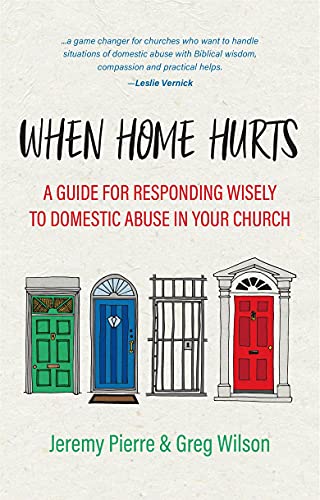How should the church handle domestic abuse? What steps can a church take to help those affected by abuse?

In their new book, When Home Hurts: A Guide for Responding Wisely to Domestic Abuse in Your Church, Jeremy Pierre and Greg Wilson provide a new resource to help church leaders deal with domestic abuse. In this book, Pierre and Wilson provide a practical resource for the church to help care for those affected by abuse. They deal primarily with male abusers while giving counsel in the appendix for cases of female abusers.
The authors divide the book into three sections: 1) How to Understand Abuse, 2) How to Respond After the Initial Disclosure, and 3) How to Care in the Long Term. In the first section, they discuss the dynamics of abuse. They explain the experience, “Abuse occurs as a person in a position of greater influence uses his personal capacities to diminish the personal capacities of those under his influence in order to control them.” They help readers understand that abuse is more than a physical act. They also describe the opposite of abuse which is the way the Lord designed people to use their abilities, “love is using one’s personal capacities to bring about good for others in the world.”
The second and third sections practically explain how to get involved as a church in cases of abuse. They recommend a team approach, using many different resources with different skill sets to provide help. For example, they showed how church leaders could work with other professional counselors in the process. I appreciate that the authors did not claim to have all the information on abuse, but they referenced other helpful resources.
There are many strengths of this book. First, they help the reader understand the experience of abuse; I felt empathy for those going through this experience. They explain how the abused person thinks, feels, and responds. They show how abusers shape their victims by explaining trauma. Second, they focus on the heart (beliefs, desires, and commitments) as the cause of abusive behavior and the place where real change takes place. For example, they say “Abuse is not just outward actions, but an inward attitude of the heart.” Thirdly, they practically walk leaders through the process of intervention, illustrating sample conversations and responses. They also provide the church with a sample domestic abuse policy and an appendix full of other resources. Finally, they caution that abuse is a difficult problem to handle and to have realistic expectations. There are times when abusers do not repent, and evidence of true repentance is a process seen over time. The one area that I think the authors could have addressed is how to counsel the children (and others in the home) who are experiencing abuse either directly or indirectly.
This book is a great resource for anyone who wants to understand the dynamics of abuse. I am grateful that the Biblical Counseling movement is addressing these difficult areas and showing how the Bible is relevant. There are no simple answers, but the Bible is sufficient to give us a framework for dealing with abuse and pointing to the only hope for this world, Jesus Christ.